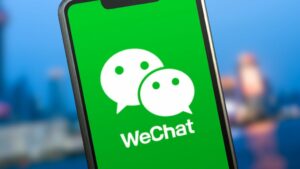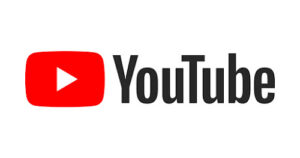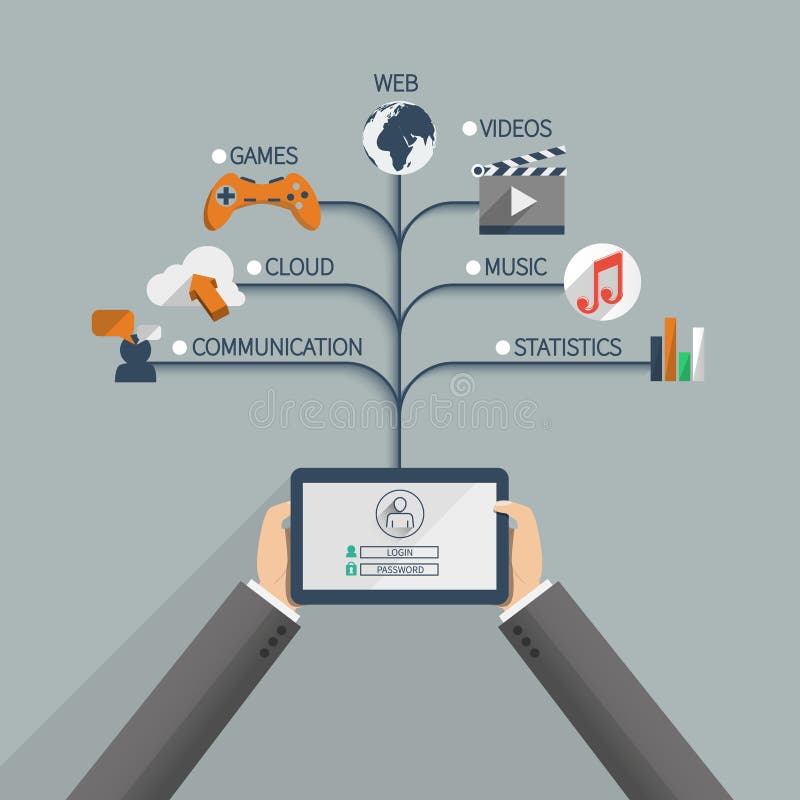Blog #5 – Embracing Open Education in Today’s Learning Environment
Introduction to Open Education:
Open education is a teaching and learning concept and practice that promotes widespread learning and knowledge sharing through open educational resources and tools. It emphasizes the universality and diversity of educational resources. It allows us to learn what we want to learn no matter where we are and when we want to learn it. The importance of open education in today’s learning environment is reflected in its ability to break down traditional barriers to education, provide flexible learning pathways, and it allows us to learn as long as we live. Open education allows us to have a platform for fair access to education without any discrimination happening.
Understanding Open Pedagogy:
Open pedagogy is an educational model that emphasizes the sharing of resources and knowledge, such as a variety of video materials and a variety of open textbooks. To give an example of video teaching, when I was learning Korean before, I would often look for various teaching videos on YouTube to practice my Korean pronunciation. Sharing and collaboration are the key principles of open pedagogy, and they change traditional educational practices by making the relationship between teachers and students more interactive and collaborative. By providing diverse resources and tools that enable us to learn at our own needs and pace, OER enhances the autonomy and flexibility of learning. For example, with our Brightspace, teachers can record and upload lecture videos to Brightspace so that we can watch lectures at any time and engage in self-directed learning.
The Roles of OERs:
Open Educational Resources (OER) are teaching, learning, and research resources that are free for anyone to access, use, modify, and share. These resources include textbooks, course outline, lectures, assignments, quizzes, labs, and multimedia materials such as video and audio.
The availability of OER changes and impacts student engagement and academic success in a variety of ways. First, free access to high-quality learning materials significantly reduces the cost of education and makes higher education affordable for more students. This financial relief has a profoundly positive impact on low-income student groups in particular.The flexibility of OER allows teachers to develop learning styles and learning resources that are more suitable for students, increasing motivation and engagement.
In addition, the use of multimedia materials enriches the traditional mode of learning by providing more interactive and hands-on opportunities that help enhance our understanding and mastery of course content. Multimedia materials such as video, audio and interactive charts make learning more lively and interesting.
Open Licensing Explained:
Open Licenses are legal licenses that allow anyone to freely access, use, modify, and distribute certain works. These licenses can support educational practices by allowing teachers to share and adapt instructional materials to better suit the needs of their students. Open licenses clarify what uses are permitted through clear terms, legally exploiting and adapting the resources of others to create learning models that are better suited to students.
Challenges and Solutions:
Resource quality and applicability: It might be difficult to find resources that are of high quality and applicable to a particular curriculum.
Solution: Educators can work together to evaluate and recommend resources, and create a resource quality assurance website.
Copyright and intellectual property issues: Open license terms might be complex.
Solution: Educators should carefully understand open licenses to ensure proper use and distribution of resources.
Cultural and linguistic barriers: Some resources may not be applicable to students from different cultural and linguistic backgrounds.
Solution: Encourage diverse resource creation and translate existing resources to accommodate diverse students
Privacy in Digital Learning:
When we are studying online, all of our information is public. So our privacy and security needs to be guaranteed. First we should understand what data is being collected and how that data is being used. And online learning platforms should ensure strict security measures to protect student data, including encryption and access control. These measures ensure that our personal information is not misused or shared without consent. In addition, transparent privacy protection measures and the right of students to be informed about the use of their data are crucial. Protecting privacy not only helps maintain a level of trust for our students, but also contributes to a safe learning environment that promotes better learning experiences and outcomes.
Privacy vs. Educational Needs:
During the previous pandemic, all our learning relied on digital technology, which meant we needed to be more self-directed. However, the downside was that teachers couldn’t monitor our learning and were unaware of our progress. So, teachers might check our Brightspace to see our viewing history of recorded lectures. All our exams were also conducted online, requiring us to turn on our cameras, ensure our hands were visible, and keep our desks free of unrelated items. While these actions do impact our privacy, they are necessary. To achieve a balance, it’s crucial to make these privacy policies transparent and restrict data access, allowing only authorized personnel to use the data.
Universal Design for Learning:
Diversified content presentation: Provide various forms of learning materials, such as text, audio, video, and images, to cater to different learning styles and needs.
Diverse expression and interaction methods: Allow students to express their understanding and learning outcomes in various ways, such as written reports, presentations, videos, or projects. Provide a variety of interactive tools, such as online discussion boards and live chats, to encourage student participation and expression of opinions.
Offer flexible learning paths: Allow students to choose different learning paths and resources based on their learning pace and interests. Enable students to plan their own learning.
Ethics and Digital Tools in Education:
In selecting and using digital tools in education, the following points should be considered:
Privacy and Data Protection: Ensure that students’ personal information and data are adequately protected to prevent misuse or unauthorized sharing.
Fairness and Non-Bias: There should be no discrimination against any group, and all students should have equal access and usage opportunities.
Transparency and Informed Consent: Students should be informed about the tools being used, the information being collected, and any potential risks involved.
Content Quality and Accuracy: Ensure that the digital tools and resources used provide accurate information, and avoid the dissemination of incorrect information.
Reflect on Digital Technologies and Identity
Digital technology has had a huge impact on our education. It has made educational resources more widely accessible, allowing students to access any course they desire anytime, anywhere through online courses and various learning platforms. Additionally, various communication platforms have made our learning more efficient. For example, communication platforms like WeChat, Instagram, and Facebook, video platforms like YouTube, and interactive platforms like Zoom and WordPress play a significant role. Each of us is portrayed virtually in the Internet, and in real life each of us has a different personality, which may be extroverted or introverted. In these online interactive platforms, each one of us can speak freely. For example, Facebook or WordPress, which we use now, where we may not have met our classmates, but we can speak freely on our blogs and get feedback from our classmates.
Digital Platforms in Education
Firstly, considering communication platforms, WeChat is an excellent example. I have contact information for many teachers and classmates on WeChat. Whenever I encounter a difficult problem or a knowledge point I want to understand, I can send a photo or text to my teacher, who can promptly address my queries. Classmates can also help each other and progress together.

Secondly, YouTube serves as a prime example of a video platform. As a large video platform, YouTube offers a wide range of videos. It includes not only various TV shows for entertainment but also numerous educational and lecture videos for learning. I am a student majoring in economics, and there are always something I don’t understand in my economics class, so I will go to YouTube to search for explanatory videos.

Lastly, interactive platforms like WordPress allow us to share various information. On WordPress, we can share new knowledge and gain insights into other students’ perspectives and experiences, making it an excellent learning platform.
Instructor and Social Presence in Online Learning
An instructor’s presence helps to create a sense of community among students. “A strong community is imperative in higher education learning and helps reduce feelings of isolation in online learning. Characteristics of a learning community include students’ sense of trust, belonging and mutual interdependence, and shared educational goals through interaction with other course participants (Rovai, 2002).” When teachers are visibly involved in the course, students are more likely to be actively engaged. In my opinion the presence of the teacher is crucial and the teacher’s presence gives me a sense of reassurance, which is a sense of trust.
Here are some of the strategies mentioned in this article.
1. Design
Strategies/Indicators:
- Organization: Structuring the course effectively.
- Materials: Providing diverse and relevant learning materials.
- Activities: Creating engaging and interactive activities.
- Discussion topics: Crafting meaningful discussion prompts.
- Resources: Offering additional learning resources.
- Technology: Utilizing educational technology tools.
- Methods: Applying varied instructional methods.
Examples:
- Rubrics
- Diverse sources/media
- Clear learning objectives
- Library links
2. Facilitation
Strategies/Indicators:
- Setting climate: Creating a positive and inclusive learning environment.
- Encouragement: Motivating and supporting students.
- Acknowledgement: Recognizing student contributions.
- Participation in discussion: Engaging in student discussions.
Examples:
- Introductions
- Announcements
- Detailed and timely feedback
- Online office hours
- Synchronous sessions
- Compliments and warmth
- Humor
When a teacher is present and socially engaged in an online classroom, it creates an environment where students feel supported and valued. This leads to higher levels of engagement because students are more likely to participate in discussions, complete assignments, and remain in the course. Additionally, an engaging instructor presence helps clarify questions, provide immediate feedback and foster critical thinking, all of which contribute to better learning outcomes.
How open learning principles can make education more accessible and inclusive.
Open learning is making learning more flexible by making more educational resources widely as well as generally available. It allows students to learn on their own schedule, whenever and wherever they want. Open learning allows students to receive education without limitations, regardless of your profession or country. Open learning also makes education more autonomous and inclusive.

How have historical advancements in educational technology shaped modern educational tools and philosophies?
Twenty Years of Edtech mentions that edtech is a rapidly changing field and uses this quote to motivate senior executives to embrace edtech. At the very beginning of this article it mentions Wikipedia in 1998 to YouTube in 2005.I use these two learning styles as an example, at the very beginning when we wanted to learn something else or if we were confused about anything we would go to Wikipedia. But the written word was not as engaging as the teacher’s explanation in a video, and with the advent of YouTube, open learning took on a more concrete look.
How the shift from traditional to digital?
Since ancient times, the traditional model of education has been centered on the teacher in the classroom, and one can only rely on the teacher’s teaching to receive new knowledge. Digital platforms are created to be more student-centered so that students can find their own way of learning that suits them. Take our current generation of students as an example, when we were young, we had no other way of learning and could only rely on the teacher’s explanations in the classroom. After growing up, there are more and more open learning platforms, such as zoom and YouTube. These can be customized to suit the needs of the student.
Connect the theories and technological developments to current educational practices.
We often talk about personalized learning, and personalized learning means developing a learning style that best suits one’s needs. I think the mode of course selection in universities is a demonstration of personalized learning. In addition to our major courses, we can choose any courses we are interested in. For example, I am an economics student, and I have also chosen music, writing, and various other courses that interest me. This makes me feel that learning is not boring and can be fun. This has influenced my studies for the better.
The role of multimedia resources in enriching educational experiences.
The role of multimedia resources is more about making learning more interesting and can be enriched by combining pictures, images and animations. I have seen an animation that talks about the history of money in the United States, which allowed me to understand the overall process of money development in a very easy way for me to understand. This is one of the uses of multimedia resources and one of my favorite ways.
